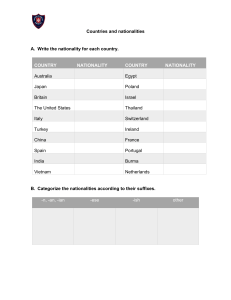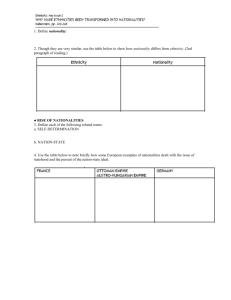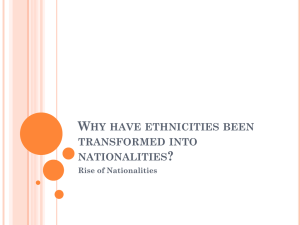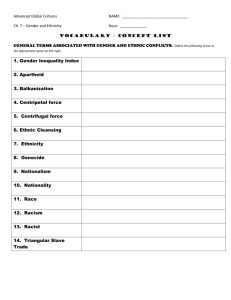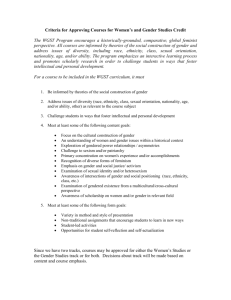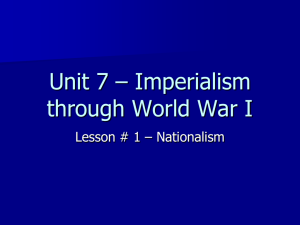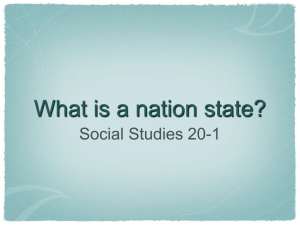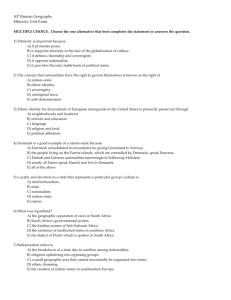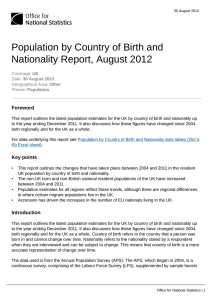Ch7/Sec2: Why Have Ethnicities Been Transformed Into Nationalities?
advertisement
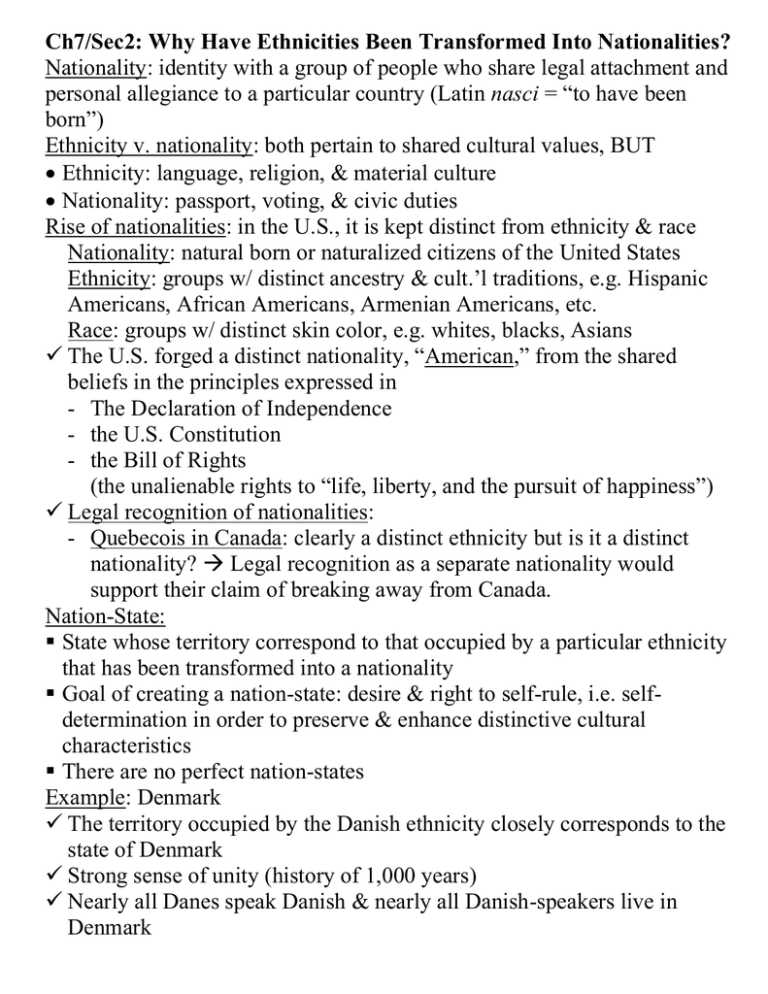
Ch7/Sec2: Why Have Ethnicities Been Transformed Into Nationalities? Nationality: identity with a group of people who share legal attachment and personal allegiance to a particular country (Latin nasci = “to have been born”) Ethnicity v. nationality: both pertain to shared cultural values, BUT Ethnicity: language, religion, & material culture Nationality: passport, voting, & civic duties Rise of nationalities: in the U.S., it is kept distinct from ethnicity & race Nationality: natural born or naturalized citizens of the United States Ethnicity: groups w/ distinct ancestry & cult.’l traditions, e.g. Hispanic Americans, African Americans, Armenian Americans, etc. Race: groups w/ distinct skin color, e.g. whites, blacks, Asians The U.S. forged a distinct nationality, “American,” from the shared beliefs in the principles expressed in - The Declaration of Independence - the U.S. Constitution - the Bill of Rights (the unalienable rights to “life, liberty, and the pursuit of happiness”) Legal recognition of nationalities: - Quebecois in Canada: clearly a distinct ethnicity but is it a distinct nationality? Legal recognition as a separate nationality would support their claim of breaking away from Canada. Nation-State: State whose territory correspond to that occupied by a particular ethnicity that has been transformed into a nationality Goal of creating a nation-state: desire & right to self-rule, i.e. selfdetermination in order to preserve & enhance distinctive cultural characteristics There are no perfect nation-states Example: Denmark The territory occupied by the Danish ethnicity closely corresponds to the state of Denmark Strong sense of unity (history of 1,000 years) Nearly all Danes speak Danish & nearly all Danish-speakers live in Denmark BUT!!! - 10% of Denmark has ethnic nationalities (Turkish, Bosnian Muslims) - It controls 2 non-Danish islands in the Atlantic: Faero Islands & Greenland Nation-states in Europe: Ethnicities became nationalities as in the 19th & early 20th centuries Germany did not become a nation-state until 1871 (until then: 300 states comprising the German Empire, dominated by Prussia) WWII: goal of unifying all German-speaking territories (Austria & the Sudentenland) Defeat in WWII division into W. & E. Germany unification in 1990 Nationalism: - Loyalty & devotion to a nationality (necessary for a nation to survive) - Promotes a sense of national consciousness that places one’s nation, culture, & interests above those of other nations - Emphasizes shared attitudes that unify people & enhance support for a state it is a centripetal force (“directed toward the center”) How? Promoting national symbols, e.g. flag (Pledge of Allegiance), songs (National Anthem, America the Beautiful) Legal holidays associated w/ historical events, e.g. 4th of July, Thanksgiving, MLK Day Sports - Nationalism can become extreme when it primarily relies on creating negative images of other nations, e.g. jokes Multiethnic states: States that contain more than one ethnic group Each ethnic group contributes cultural features to the formation of a single nationality, e.g. the United States, Canada, Bosnia and Herzegov. Multinational states: contain two or more ethnic groups w/ traditions of self-determination that agree to coexist peacefully (or not) by recognizing each other as distinct nationalities (or not), e.g. UK (England, Scotland, Wales, Northern Ireland)
